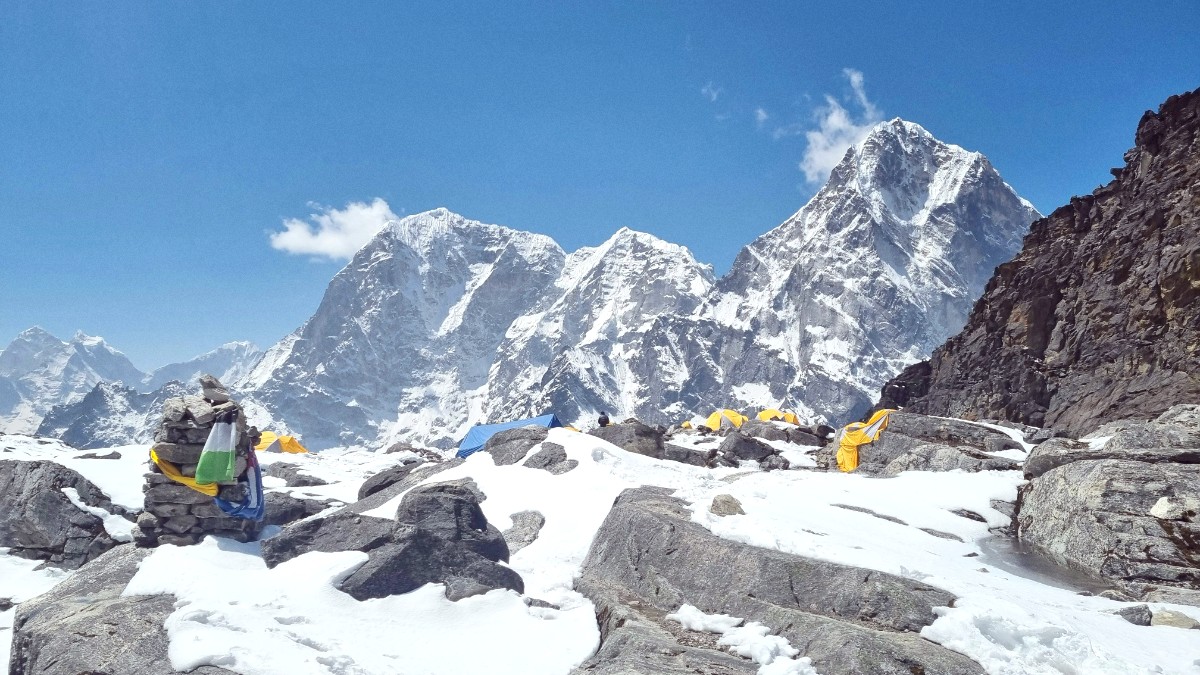
Nepal
The main activity on the EBC trek is trekking itself. The region also offers specific outdoor adventures that contribute to the journey.
Trails are well-maintained, through forests and along the Dudh Koshi river. They include suspension bridges, like the Hillary Bridge. Elevation gain is steady and manageable.
Paths become more exposed, with steeper ascents and descents. The air thins noticeably. Terrain remains generally clear, but rocky sections increase.
The landscape becomes barren and rocky. Trails are more challenging, often navigating moraine fields and uneven terrain. The major challenge here is reduced oxygen levels, making every step an effort. The ascent to Kala Patthar is a steep, strenuous climb.
Embrace acclimatization hikes as part of the adventure. They are not optional; they support your safety and trek success, providing both physical benefits and additional scenic views.
The Everest Base Camp trek is a cultural journey. The Sherpa people's way of life and Buddhist traditions are deeply woven into the region.
Interact with local Sherpa communities. Observe their daily routines, their resilience in high-altitude living, and their warm hospitality. Their strong Buddhist faith is evident in the prayer flags, mani walls, chortens, and monasteries that dot the landscape.
The Saturday market in Namche Bazaar is especially active. Local villagers come to trade goods, and you can observe the flow of life in the mountains.
Buddhist traditions shape daily life; prayer flags and chortens are everywhere.
Experience Sherpa hospitality and community resilience.
Enjoy hearty teahouse meals, a core part of the cultural experience.
While the EBC trek is demanding, opportunities for relaxation and rejuvenation exist, mainly in Kathmandu or larger villages.
Kathmandu and the Kathmandu Valley (e.g., around Boudhanath or Nagarkot) offer various yoga and meditation retreats. These create a peaceful environment for spiritual and physical well-being.
This is an activity to consider before or after your trek, rather than during it.
Evenings on the trek revolve around the communal dining hall, providing a warm, central space to relax.
Trekkers play cards, read, and chat with fellow travelers and guides by the stove.
The "nightlife" on the trek is about quiet camaraderie and preparation for the next day's journey.
Evenings on the trek are generally quiet, focused on rest, conversation, and preparing for the next day.
Evenings in the teahouses revolve around the communal dining hall. Trekkers play cards, read, chat with fellow travelers and guides, and warm themselves by the stove.
The "nightlife" on the trek is about quiet camaraderie and preparation for the next day. Star gazing is also a popular quiet activity.
The main market hub on the trek route. Find trekking gear (quality varies), basic supplies, snacks, and some local handicrafts.
Kathmandu's Thamel is the main district for extensive trekking gear, outdoor apparel, souvenirs, and handicrafts.
In Kathmandu Valley (Patan, Bhaktapur), visit artisan workshops specializing in metalwork, pottery, wood carving, and thangka painting.
Buy any specialized trekking gear (boots, sleeping bag, down jacket) in your home country or rent them in Kathmandu. Gear purchased on the trek itself, especially at higher altitudes, is often expensive and of uncertain quality.